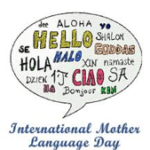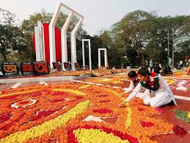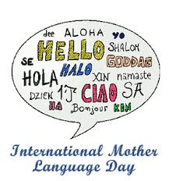 “Languages are the most powerful instruments of preserving and developing our tangible and intangible heritage.” — From the United Nations International Mother Language Day
“Languages are the most powerful instruments of preserving and developing our tangible and intangible heritage.” — From the United Nations International Mother Language Day
International Mother Language Day has been observed every year on 21 February since the year 2000. It was created by the United Nations Education, Science and Cultural Organization (UNESCO) to promote linguistic and cultural diversity and multilingualism.
The idea of marking this day started in Bangladesh where 21 February is the anniversary of the day people in that country fought to recognize the Bengali (Bangla) language. In Bangladesh people still lay flowers at the Shaheed Minar (Martyr’s Monument) to remember the day.
 Languages are vital for people and the world as instruments to preserve identity, development, education and integration. Sadly, mainly due to globalization just over 40% of the 6,000 or so languages spoken in the world today are endangered and only a few hundred languages have a place in educational systems. Even fewer are represented digitally.
Languages are vital for people and the world as instruments to preserve identity, development, education and integration. Sadly, mainly due to globalization just over 40% of the 6,000 or so languages spoken in the world today are endangered and only a few hundred languages have a place in educational systems. Even fewer are represented digitally.
Every two weeks a language disappears — taking with it an entire cultural and intellectual heritage.
When even one language vanishes a part of the world’s rich tapestry of cultural diversity also disappears. A staggering fact is that around 40 percent of the planet’s population does not have access to an education in a language they speak or understand. Strides are being made in mother tongue-based multilingual education. There is a growing understanding of its importance, particularly in early schooling, and more commitment to its development in public life.
 A recent example is Sara Wesslin, a Skolt Sami journalist in Finland who successfully lobbied the country’s education minister to provide funds for teaching and preserving her language.
A recent example is Sara Wesslin, a Skolt Sami journalist in Finland who successfully lobbied the country’s education minister to provide funds for teaching and preserving her language.
To celebrate this special UNESCO day every year a different theme is chosen. The theme of 2020 is: “Indigenous languages matter for development, peacebuilding and reconciliation.”








